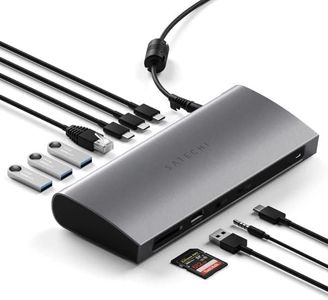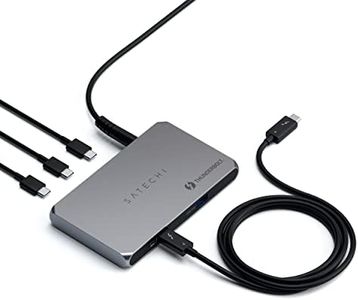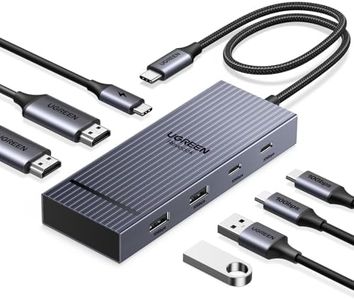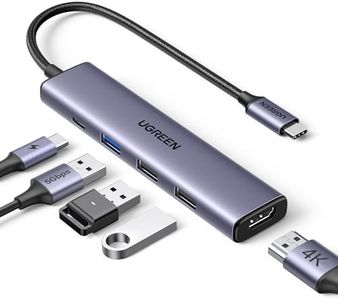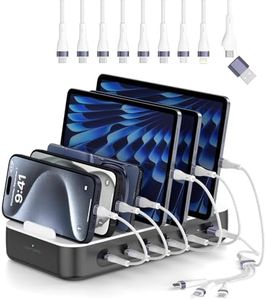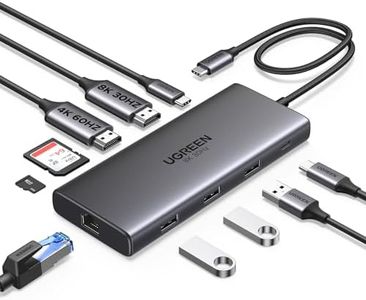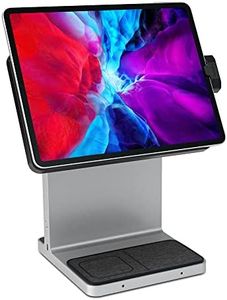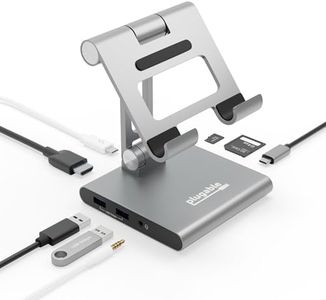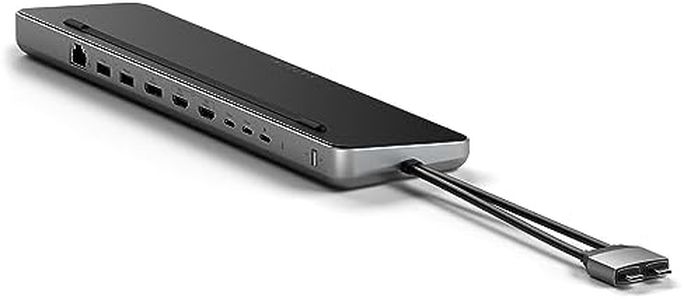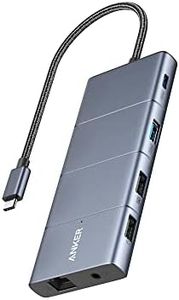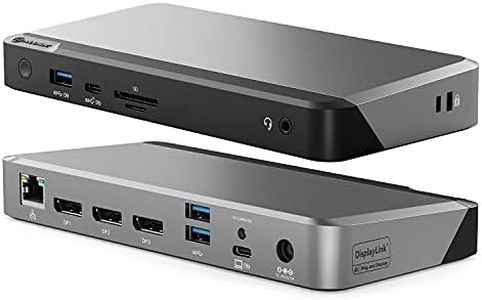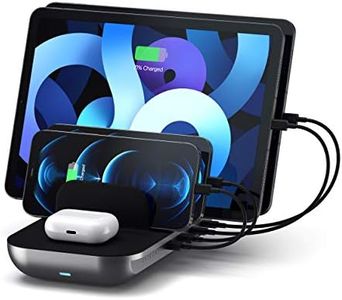We Use CookiesWe use cookies to enhance the security, performance,
functionality and for analytical and promotional activities. By continuing to browse this site you
are agreeing to our privacy policy
10 Best Ipad Docking Stations
From leading brands and best sellers available on the web.Buying Guide for the Best Ipad Docking Stations
Choosing an iPad docking station can be a great way to increase your device’s versatility by adding ports, charging capabilities, and connections to other devices. To get the best docking station for your needs, think about how, where, and why you'll use it. Do you want to set up your iPad like a desktop computer, stream media onto a bigger display, or make it easier to connect accessories like keyboards or hard drives? Understanding your main usage scenario will guide your choice. Now, let’s break down the key features to look for and how to select the right ones.Port Types and QuantityThe types and number of ports on a docking station determine what you can connect to your iPad. Common ports include USB-A, USB-C (for charging and data transfer), HDMI (for external displays), SD card readers, and headphone jacks. If you plan to connect many peripherals—such as keyboards, mice, external drives, or monitors—look for stations with multiple and varied ports. For simple setups with just charging and maybe a keyboard, a few essential ports will suffice. Your planned usage should help decide whether you need something basic or a more fully-featured dock.
Charging CapabilitySome docking stations can charge your iPad while it’s docked, using what's called 'pass-through charging.' This is helpful if you use your iPad for long periods and don’t want to worry about battery life. Charging power varies, with some docks providing enough for fast charging and others only trickling in power. If you often use demanding apps or keep your screen on for hours, choose a dock that supports higher-wattage charging (like 18W or higher). If you only dock occasionally, minimal charging power might be enough.
CompatibilityiPad docking stations are designed to work with certain iPad models, especially since not all iPads use the same connectors (USB-C, Lightning, Smart Connector). Check if the docking station specifies support for your particular iPad generation. For example, newer iPads often use USB-C, while older versions may use Lightning. Picking a compatible dock ensures all functions work smoothly and your iPad connects securely.
Video Output SupportIf you intend to connect your iPad to a larger screen (like a TV or monitor), the docking station’s video output is key. Some docks offer HDMI, DisplayPort, or VGA outputs. HDMI is most common and supports both video and audio. Consider the video resolution support—some docks only handle 1080p (Full HD), while others can output 4K. If high-quality visuals for presentations, movies, or multitasking are important to you, opt for a dock supporting higher resolutions and multiple monitors if needed.
Form Factor and DesignThe physical size and design of the docking station can impact your experience. Some are slim and portable for on-the-go use, while others are larger for desk setups. Decide how and where you'll use your dock: For travel, a lightweight and compact design is better. For a fixed home or office station, a larger, sturdier dock might offer more stability and ports. You may also want to consider whether it props up your iPad at a convenient angle for typing or viewing.
Build Quality and SafetyDocking stations vary in their material quality and protections. Some are made with metal for durability, while others use plastic to stay lightweight. Better docks usually offer safety features like overcurrent, overvoltage, and short-circuit protection to keep your devices safe while charging and in use. If you'll be docking expensive devices or using the station for long sessions, prioritize higher build quality and reliable safety certifications.
